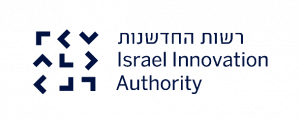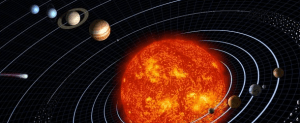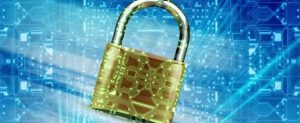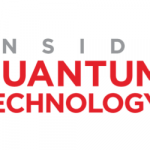Quantum News Briefs January 2: Israel Innovation Authority announces largest consortium in its history to develop Israel’s quantum computing technologies; Atomic clocks in space could help uncover the secrets of dark matter; “Cryptographic agility” the words to remember in the Quantum Computing Cybersecurity Preparedness Act + MORE

Quantum News Briefs January 2: Israel Innovation Authority announces largest consortium in its history to develop Israel’s quantum computing technologies; Atomic clocks in space could help uncover the secrets of dark matter; “Cryptographic agility” the words to remember in the Quantum Computing Cybersecurity Preparedness Act + MORE
*****
Israel Innovation Authority announces largest consortium in its history to develop Israel’s quantum computing technologies

The Israel Innovation Authority has announced the formation of the largest consortium in its history, with the aim of developing Israel’s quantum computing technologies with a budget of NIS 115 million. Quantum News Briefs summarizes the announcement below.
The consortium will promote two quantum processor technologies – trapped ions and superconductors – which are among the most advanced and mature technologies today, alongside deep layers of quantum software. The key developments that will be prioritized include quantum processors, system-building blocks, coherent control tools, noise characterization and reduction software, and a fully automated software environment from the application level to physical implementation.
Five Israeli companies are members of the consortium: IAI Group’s Elta Systems division, Quantum Art, Classiq, Qedma, and Rafael Advanced Defense Systems. In addition, technological development will be supported by leading academic entities in Israel: professors Nadav Katz, Alex Retzker, and Raam Uzdin of Hebrew University; professor Roee Ozeri of the Weizmann Institute; professor Michael Stern of Bar-Ilan University; professors Steven Frankel and Tal Mor of the Technion; and a research group led by Dr. Ohad Birk of Soroka Hospital.
The consortium’s budget for three years is approximately NIS 115 million.
The approved consortium continues the work of the Innovation Authority in multiple programs and within the National Quantum Science and Technology Program (TELEM Forum) framework.
It promotes Israeli industry and academia, positions the country at the forefront of global technology and shortens the path to partnership in the competitive international commercial market. Click here to read complete article in Israel National News.
*****
Atomic clocks in space could help uncover the secrets of dark matter
 Studying an atomic clock on-board a spacecraft inside the orbit of Mercury and very near to the Sun might be the trick to uncovering the nature of dark matter, suggests a new study described in SciTechDaily and summarized below by Quantum News Briefs.
Studying an atomic clock on-board a spacecraft inside the orbit of Mercury and very near to the Sun might be the trick to uncovering the nature of dark matter, suggests a new study described in SciTechDaily and summarized below by Quantum News Briefs.
Dark matter has so far evaded detection on Earth, despite decades of experimental efforts. A key component of these searches is an assumption about the local density of dark matter, which determines the number of dark matter particles passing through the detector at any given time, and therefore the experimental sensitivity. In some models, this density can be much higher than is usually assumed, and dark matter can become more concentrated in some regions compared to others. When dark matter particles have very small masses, they induce oscillations.
An international team of researchers, Kavli Institute for the Physics and Mathematics of the Universe (Kavli IPMU) Project Researcher Joshua Eby, University of California, Irvine, Postdoctoral Fellow Yu-Dai Tsai, and University of Delaware Professor Marianna S. Safronova, claimed that in a particular region of the Solar System, between the orbit of Mercury and the Sun, the density of dark matter may be exceedingly large, which would mean exceptional sensitivity to the oscillating signals.
These signals could be picked up by atomic clocks, which operate by carefully measuring the frequency of photons emitted in transitions of different states in atoms. Ultralight dark matter in the vicinity of the clock experiment could modify those frequencies, as the oscillations of the dark matter slightly increase and decrease the photon energy.
The density of dark matter is only constrained in the Solar System by information about planet orbits. In the region between the Sun and Mercury, the planet nearest to the Sun, there is almost no constraint. So a measurement onboard a spacecraft could quickly uncover world-leading limits on dark matter in these models. Click here to read original article in-entirety.
*****
“Cryptographic agility” the words to remember in the Quantum Computing Cybersecurity Preparedness Act
 US President Joe Biden recently enacted legislation entitled HR 7535: The Quantum Computing Cybersecurity Preparedness Act. Naked Security’s Paul Ducklin recently published an extensive review in NakedSecurity about the need for the act and the inherent dilemmas posed by security in the quantum world of Schrödinger’s famous cat. Quantum News Briefs summarizes the terms of the HR7535; Ducklin’s complete article worth the time to read
US President Joe Biden recently enacted legislation entitled HR 7535: The Quantum Computing Cybersecurity Preparedness Act. Naked Security’s Paul Ducklin recently published an extensive review in NakedSecurity about the need for the act and the inherent dilemmas posed by security in the quantum world of Schrödinger’s famous cat. Quantum News Briefs summarizes the terms of the HR7535; Ducklin’s complete article worth the time to read
The Act doesn’t yet mandate any new standards, or give us a fixed time frame for switching away from any algorithms we’re currently using, so it’s more of a reminder than a regulation. Notably, the Act is a reminder that cybersecurity in general, and cryptography in particular, should never be allowed to stand still:
Congress finds the following:
(1) Cryptography is essential for the national security of the United States and the functioning of the economy of the United States.
(2) The most widespread encryption protocols today rely on computational limits of classical computers to provide cybersecurity.
(3) Quantum computers might one day have the ability to push computational boundaries, allowing us to solve problems that have been intractable thus far, such as integer factorization, which is important for encryption.
(4) The rapid progress of quantum computing suggests the potential for adversaries of the United States to steal sensitive encrypted data today using classical computers, and wait until sufficiently powerful quantum systems are available to decrypt it.
It is the sense of Congress that:
(1) a strategy for the migration of information technology of the Federal Government to post-quantum cryptography is needed; and
(2) the governmentwide and industrywide approach to post-quantum cryptography should prioritize developing applications, hardware intellectual property, and software that can be easily updated to support cryptographic agility.
What to do?
Ducklin tells readers, “The last two words above are the ones to remember: cryptographic agility.” That means you need not only to be able to switch algorithms, change key sizes, or adjust algorithm parameters quickly… …but also to be willing to do so, and to do so safely, possibly at short notice. Click here to read article in-entirety.
*****
Researchers at India’s Karlsruhe Institute of Technology working on stable states for quantum computers
Karlsruhe Institute of Technology (KIT) researchers have succeeded in developing novel and unconventional superconducting qubits. Quantum News Briefs summarizes the announcement.
“The heart of a superconducting qubit is a so-called Josephson junction, which is used to store quantum information. It is precisely at this point that we have made a decisive change,” says Dr. Ioan M. Pop from the Institute for Quantum Materials and Technologies of KIT (IQMT). Typically, such Josephson junctions for superconducting quantum bits are created by separating two layers of aluminum with a thin oxide barrier. “In contrast, for our qubits we only use a single layer of ‘granular aluminum’, a superconductor made of aluminum grains a few nanometers in size embedded in an oxide matrix,” says Pop. As a result, the material itself forms a three-dimensional network of Josephson junctions. “Excitingly, the entire properties of our qubit are dominated by a tiny constriction of only 20 nanometers. As a result, it acts like a magnifying glass for microscopic material defects in superconducting qubits and offers a promising perspective for their improvement,” adds Simon Günzler from IQMT.
The qubits developed by the team are a fundamental advancement of a previously tested approach with so-called fluxonium qubits. In this previous version, parts were made of granular aluminum and other parts were conventionally made of aluminum. In the current work, the researchers went the decisive step further and produced the complete qubits from granular aluminum. “It’s like simply cutting a quantum circuit out of a metal film. This results in completely new possibilities for industrial production with etching processes and expanded areas of application for the qubits, for example in strong magnetic fields,” says Dennis Rieger from the Physics Institute of KIT. Click here for complete announcement from IndiaEducationDiary.
*****
Sandra K. Helsel, Ph.D. has been researching and reporting on frontier technologies since 1990. She has her Ph.D. from the University of Arizona.





















